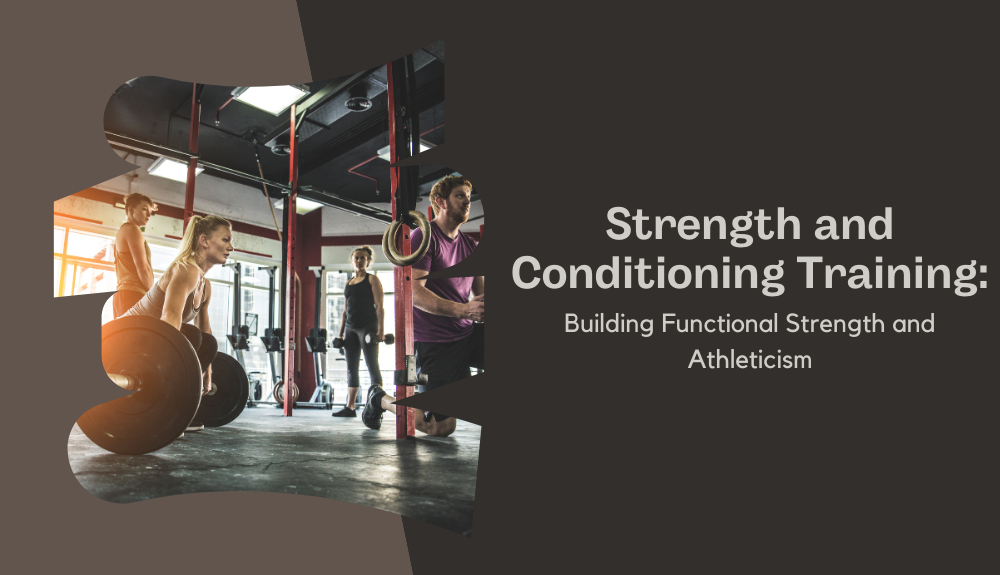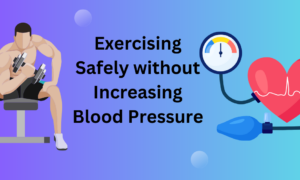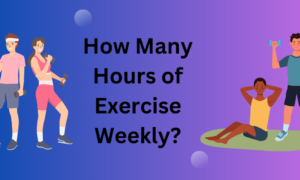Are you ready to take your fitness game to the next level? Strength and conditioning training is not just about lifting weights; it’s about building functional strength and athleticism that can enhance your performance in sports, daily activities, and overall quality of life. Let’s dive into how you can develop a well-rounded workout plan, fuel your body for optimal performance, and avoid common pitfalls along the way. Get ready to unleash your full potential!
Understanding Strength and Conditioning Training
Strength and conditioning training is a dynamic approach to fitness that focuses on improving strength, power, speed, agility, and endurance. It involves a combination of resistance exercises, cardiovascular workouts, flexibility training, and functional movements to enhance overall physical performance. This type of training is not just for athletes; it can benefit anyone looking to improve their health and fitness levels.
Understanding the principles behind strength and conditioning training is essential for maximizing your workout results. By incorporating various exercises that target different muscle groups and energy systems, you can create a well-rounded program that challenges your body in new ways. Consistency and proper technique are key components in achieving success with this type of training.
Whether you’re a beginner or an experienced gym-goer, understanding how strength and conditioning training works can help you tailor your workouts to meet your specific goals. Stay tuned as we explore the importance of functional strength and athleticism in the next section!
The Importance of Functional Strength and Athleticism
Functional strength and athleticism are crucial components of any successful fitness regimen. While traditional strength training focuses on isolated muscle groups, functional strength targets movements that mimic real-life activities. This type of training not only enhances muscle power but also improves coordination and flexibility.
Athleticism goes hand in hand with functional strength, as it involves the ability to move efficiently and effectively in various physical tasks. By incorporating exercises that challenge balance, agility, and speed into your routine, you can elevate your overall athletic performance.
Developing functional strength and athleticism helps prevent injuries by building a strong foundation that supports everyday movements. Whether you’re an athlete looking to enhance your performance or simply aiming to improve your quality of life, prioritizing functional training is key to achieving long-term health and wellness goals.
Types of Exercises for Building Functional Strength

When it comes to building functional strength, incorporating a variety of exercises is key. Compound movements like squats, deadlifts, and bench presses are great for targeting multiple muscle groups simultaneously. These exercises not only increase overall strength but also improve coordination and stability.
Bodyweight exercises such as push-ups, pull-ups, and planks are excellent for building functional strength as they engage various muscle groups while also improving flexibility. Adding in resistance training with bands or weights can further enhance muscle endurance and power.
Incorporating plyometric exercises like box jumps, jump squats, and medicine ball throws can help improve explosive power which is essential for athletes looking to boost their performance on the field or court. Don’t forget about unilateral exercises like lunges or single-leg deadlifts to address any muscular imbalances and improve overall stability.
Mixing up your routine with different types of exercises ensures that you target all areas of your body effectively while keeping things interesting and challenging.
Creating a Well-Rounded Workout Plan
When it comes to creating a well-rounded workout plan, variety is key. Incorporating a mix of strength training, cardio, and flexibility exercises can help you achieve optimal fitness levels.
Start by setting specific goals that align with your fitness aspirations. Whether it’s increasing muscle mass, improving endurance, or enhancing overall performance, having clear objectives will guide your workout routine.
Include compound movements in your regimen to target multiple muscle groups simultaneously and boost functional strength. Exercises like squats, deadlifts, and push-ups are great for building a solid foundation.
Don’t forget about cardiovascular activities to improve heart health and stamina. Running, cycling, or HIIT workouts can elevate your fitness level and support weight management.
Integrate flexibility exercises like yoga or stretching to enhance mobility and prevent injuries. A well-rounded workout plan should address all aspects of physical fitness for overall wellness.
Nutrition for Optimal Performance
Fueling your body with the right nutrients is essential for maximizing your performance in strength and conditioning training. Think of food as fuel – providing you with the energy needed to push through intense workouts and recover effectively. Opt for a balanced diet rich in lean proteins, complex carbohydrates, healthy fats, vitamins, and minerals.
Protein plays a crucial role in muscle repair and growth, so be sure to include sources like chicken, fish, eggs, beans, and nuts in your meals. Carbohydrates are your body’s primary source of energy; choose whole grains, fruits, vegetables to sustain your workouts. Healthy fats found in avocadoes, nuts, seeds help support hormone production and overall health.
Stay hydrated by drinking plenty of water throughout the day to aid digestion and keep your muscles functioning optimally. Consider pre- and post-workout nutrition to fuel up before exercise and replenish after training sessions. Remember that consistency is key when it comes to nutrition – make smart choices daily for long-term success!
Common Mistakes to Avoid in Strength and Conditioning Training

Embarking on a strength and conditioning training journey can be exhilarating, but watch out for common pitfalls that may hinder your progress. One mistake to avoid is neglecting proper form during exercises. Incorrect form not only reduces the effectiveness of the workout but also increases the risk of injury.
Another common error is overtraining without allowing sufficient rest and recovery time. Your body needs time to repair and grow stronger after intense workouts. Pushing yourself too hard without adequate rest can lead to burnout or even injuries.
Moreover, focusing solely on one aspect of fitness, such as strength or endurance, while neglecting others can create imbalances in your overall fitness level. It’s crucial to maintain a well-rounded approach to training for optimal results.
Don’t underestimate the importance of nutrition in supporting your training efforts. Fueling your body with nutritious foods will enhance performance and aid in muscle recovery. Stay mindful of these mistakes to make the most out of your strength and conditioning training routine!
Benefits Beyond Physical Fitness
Strength and conditioning training goes beyond just physical fitness. The benefits extend to mental well-being as well. Engaging in regular workouts can boost your mood, reduce stress levels, and improve cognitive function. By challenging yourself physically, you also build mental resilience and discipline.
Furthermore, strength and conditioning training can enhance your overall quality of life. Strong muscles and bones support better posture, reducing the risk of injury in daily activities. Improved balance and coordination gained through this type of training can help prevent falls as we age.
Additionally, participating in strength and conditioning programs fosters a sense of community and camaraderie among like-minded individuals. The shared dedication to self-improvement creates a supportive environment that encourages personal growth both inside and outside the gym.
Moreover, the sense of accomplishment from reaching new fitness goals can positively impact confidence levels in other areas of life. It’s not just about looking good; it’s about feeling strong, capable, and empowered to take on any challenge that comes your way.
Conclusion
Incorporating strength and conditioning training into your fitness routine can make a significant impact on your overall performance and athleticism. By focusing on functional strength, you can enhance your body’s ability to perform daily activities and excel in various sports or physical challenges.
Remember, building functional strength is not just about lifting heavy weights but also about performing exercises that mimic real-life movements. Incorporate a variety of exercises like squats, deadlifts, push-ups, pull-ups, and core work to create a well-rounded workout plan that targets different muscle groups.
Additionally, pay attention to proper nutrition to fuel your workouts and optimize recovery. Avoid common mistakes such as neglecting warm-ups or overtraining to prevent injuries and setbacks in your progress.
By committing to consistent training, balanced nutrition, and smart programming, you can reap the numerous benefits of strength and conditioning beyond just physical fitness. Improved mental resilience, increased energy levels, better posture, enhanced coordination – these are all part of the package when you invest in building functional strength.
So keep pushing yourself towards new goals, stay disciplined in your training regimen, listen to your body’s needs for rest and recovery – embrace the journey of becoming stronger both physically and mentally through strength and conditioning training.





















